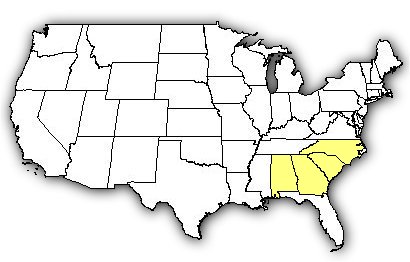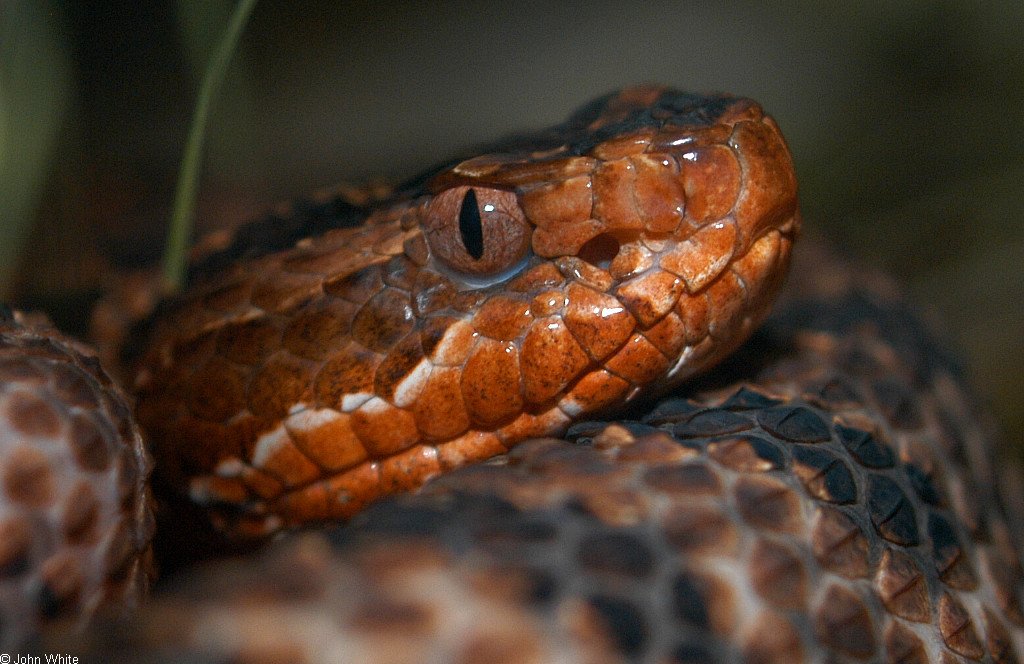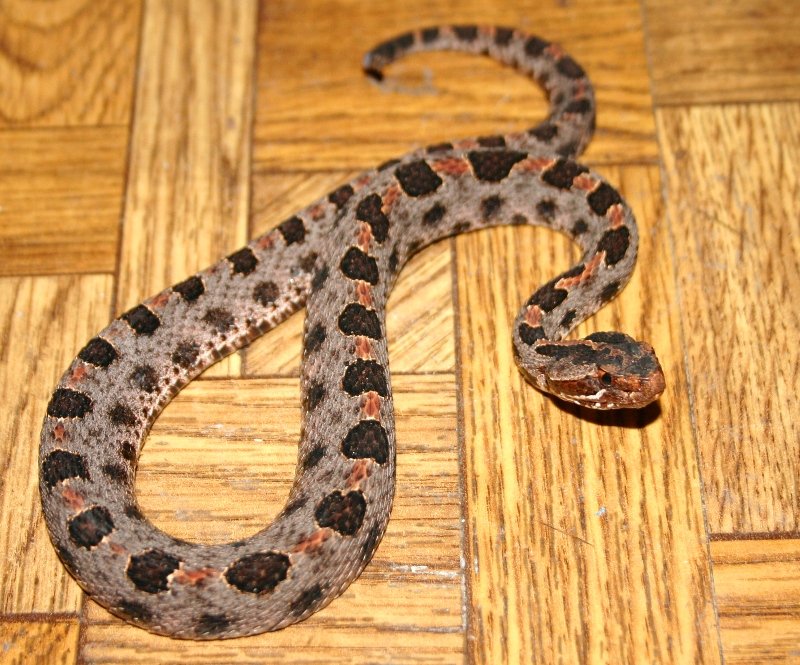CAROLINA PYGMY RATTLESNAKE
Scientific name: Sistrurus miliarius miliarius
The average size of a mature Carolina Pygmy Rattlesnake is 1 - 2 feet in length.
Description
The Carolina Pygmy Rattlesnake, often called the "Ground Rattler", is a heavy-bodied snake. The body of the snake is grey or reddish. A red or rust colored stripe often runs along the spine. The snake is marked by dark brown or black blotches along its spine that appear to cover the red stripe. There is also one or two rows of dark brown or black blotches on its sides. There is a dark cheek-stripe on both sides of the head that starts at the eye and runs diagonally down and backwards to the jaw above the mouthline. The bottom of the cheek-stripe is often edged in white. The top of the head is often marked by two stripes that continue on to the neck. The end of the tail has a small rattle on it that is seldom lounder than a buzzing insect, and is often not heard or even seen.
The Carolina Pygmy Rattlesnake is categorized as one of several primitive rattlesnakes in the genus Sistrurus. Unlike other rattlesnakes, these rattlesnakes have 9 enlarged scales on the top of their head.
The Carolina Pygmy Rattlesnake has elliptical pupils that look like cat's eyes and like all pit vipers, has a heat-sensing pit between the nostril and eye on each side of its head. The Carolina Pygmy Rattlesnake has a large, triangular head that is wider than the neck when viewed from above.
Distribution
In the United States, the Carolina Pygmy Rattlesnake is found in Alabama, Georgia, North Carolina, and South Carolina.

Map does not show area of true distribution, only the states in which there is a population.
Actual distribution in any highlighted state may be limited.

Photo used by permission:
© 2003 John White

Photo used by permission:
© 2007 Eric Marquette
For more information on venomous snakes, please see the Venomous Links page.
Terms and Conditions | Privacy Policy
Change your Cookies Preferences
